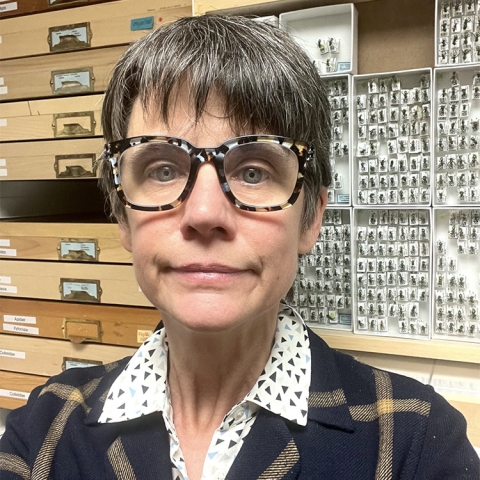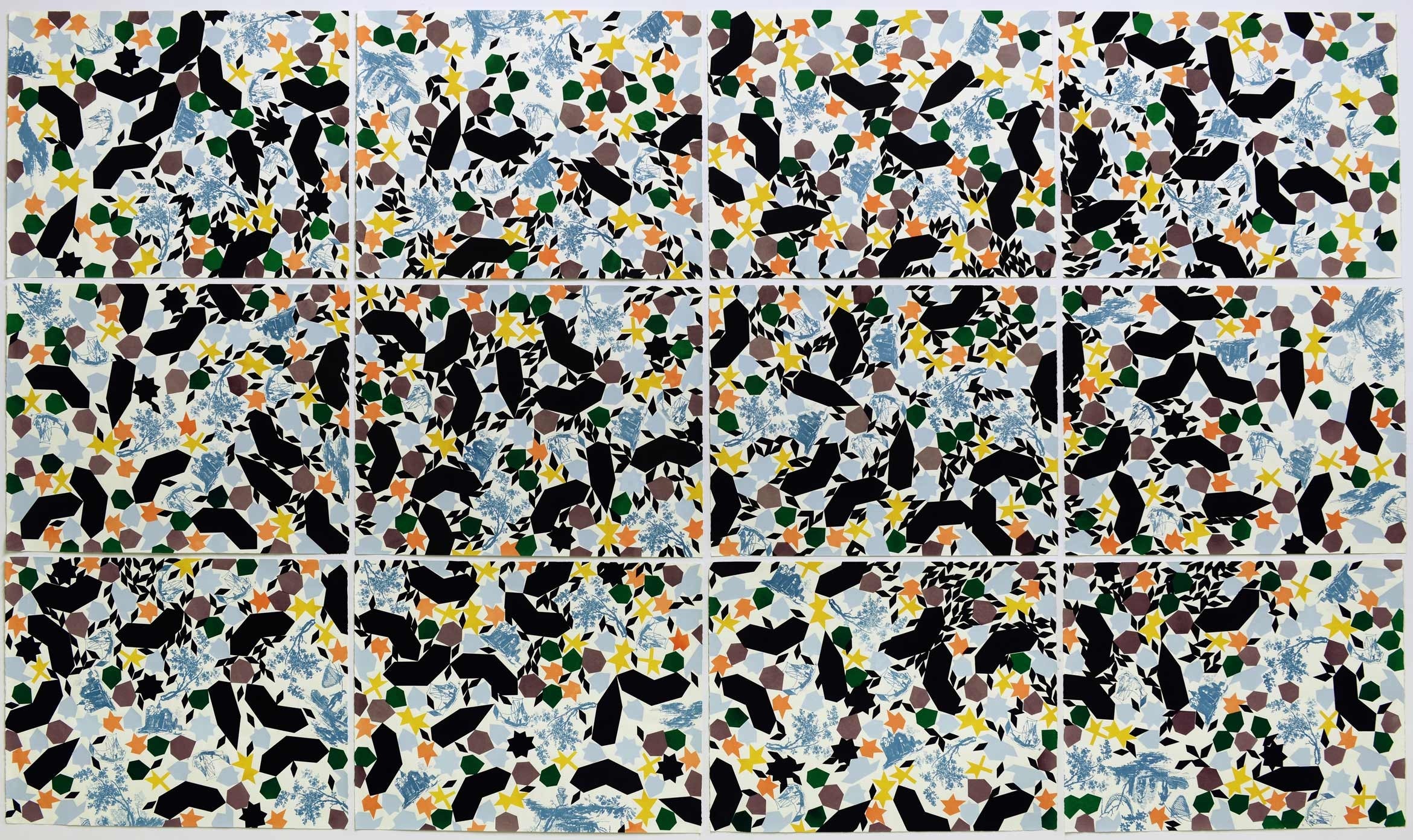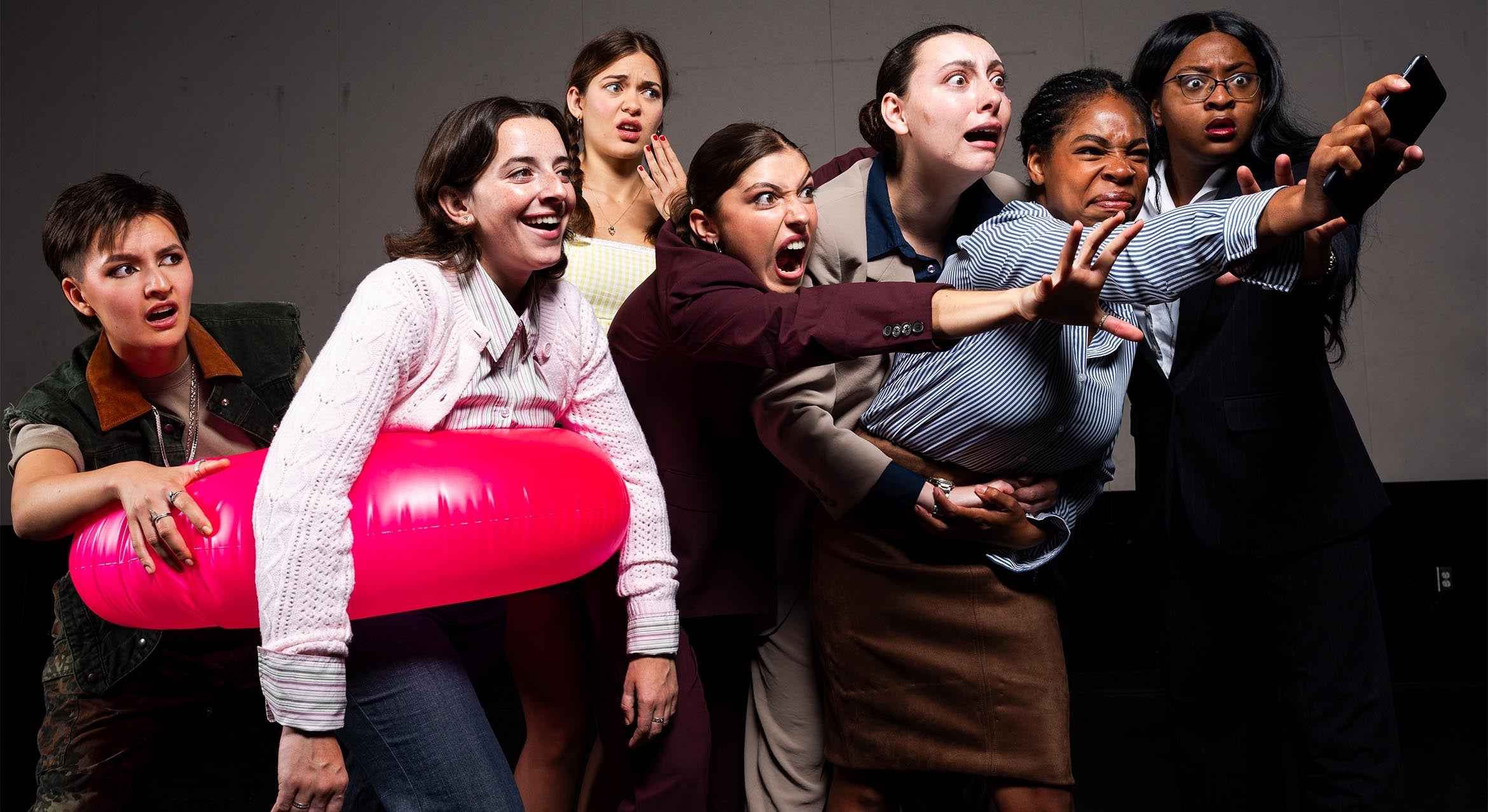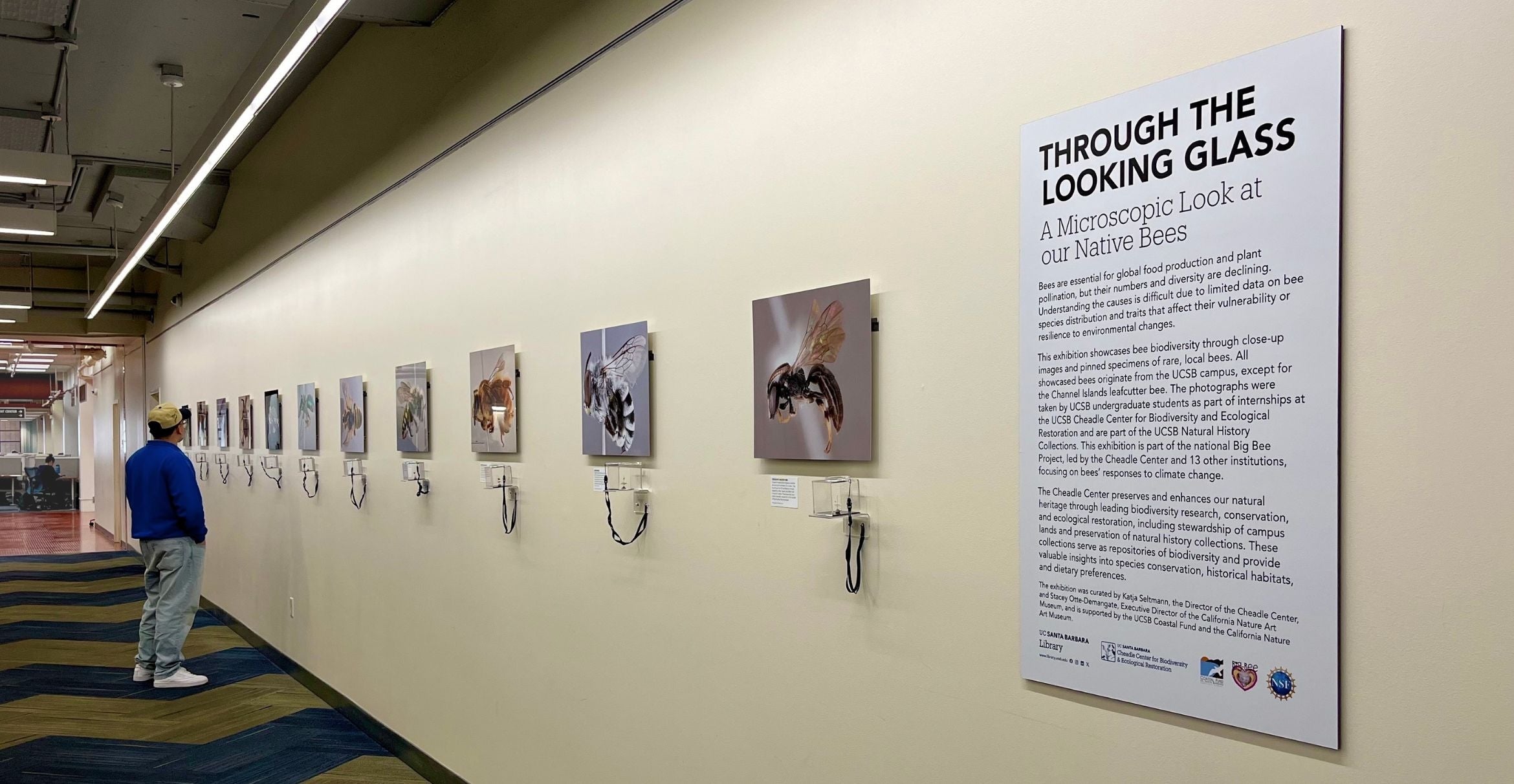
Insects often exist on the periphery of our experiences. They blend into the landscape and soundscape, rarely the objects of our attention.
But an exhibition at the UC Santa Barbara Library draws our focus to these creatures by upending our usual experience of them. “Insects are really small. So I wanted the photos larger than life,” said curator Katja Seltmann, director of UCSB’s Cheadle Center for Biodiversity & Ecological Restoration.
“Through the Looking Glass: A Microscopic Look at our Native Bees” showcases photos of species from campus, all taken by undergraduates as part of the National Science Foundation’s Big Bee project. It highlights the university’s research on this incredibly diverse group, which boasts over 20,000 species worldwide. The exhibition will run through June 30.
An interactive look at bees
A dozen photos line the library’s first-floor Ocean Gallery, and with a few exceptions, each is paired with the actual bee in the photograph above, delicately positioned in the same pose as in the image. “I think that just blowing up the picture divorces it from what the thing really looks like,” Seltmann said. “That’s why having the specimen there is important.” A small magnifying glass sits above each specimen, inviting viewers to take a closer look so that they, themselves, can make that connection between the photo and the actual specimen.
Each bee has its own box, its own placard, and its own glam shot. By highlighting individual bees, the exhibit calls attention to insect individuality. “To understand insects, we have to break this bias that they are not individuals,” Seltmann said. “We have to treat them like individuals, just like we do with wildebeest or whales.”
The exhibition’s interactivity and multifaceted presentation makes it more than a photo gallery. “People tend to linger a lot longer. They tend to go up and investigate and revisit the bees,” said Sara Kelly, the library’s exhibitions and events manager. “There’s not a time that I walk through the library that I don’t see people stopped there looking at the bees.”
The exhibit has become part of students’ daily lives, she added, saying that she’s overheard students talking with each other about their favorite bee. The gallery’s placement on the first floor near the elevators means students can return to the bees on their way to their favorite study spaces.
Serendipitous opportunities
The show traces its inception to an email from the California Nature Art Museum, in Solvang. The museum was putting together an exhibition on pollinators, and asked Seltmann if the Cheadle Center would like to contribute.
Seltmann’s group had been taking high-resolution photos of bees, including local bees, for the NSF Big Bee project. She immediately saw the potential these photos had. A grant from UCSB’s Coastal Fund paid for most of the printing and mounting, and the images made their way to Solvang.
The library’s former exhibitions librarian saw the museum’s show and approached Seltmann to bring it to UCSB. “We really value bringing an extra spotlight on research happening on campus since the library is such a hub of campus activity,” Kelly said.
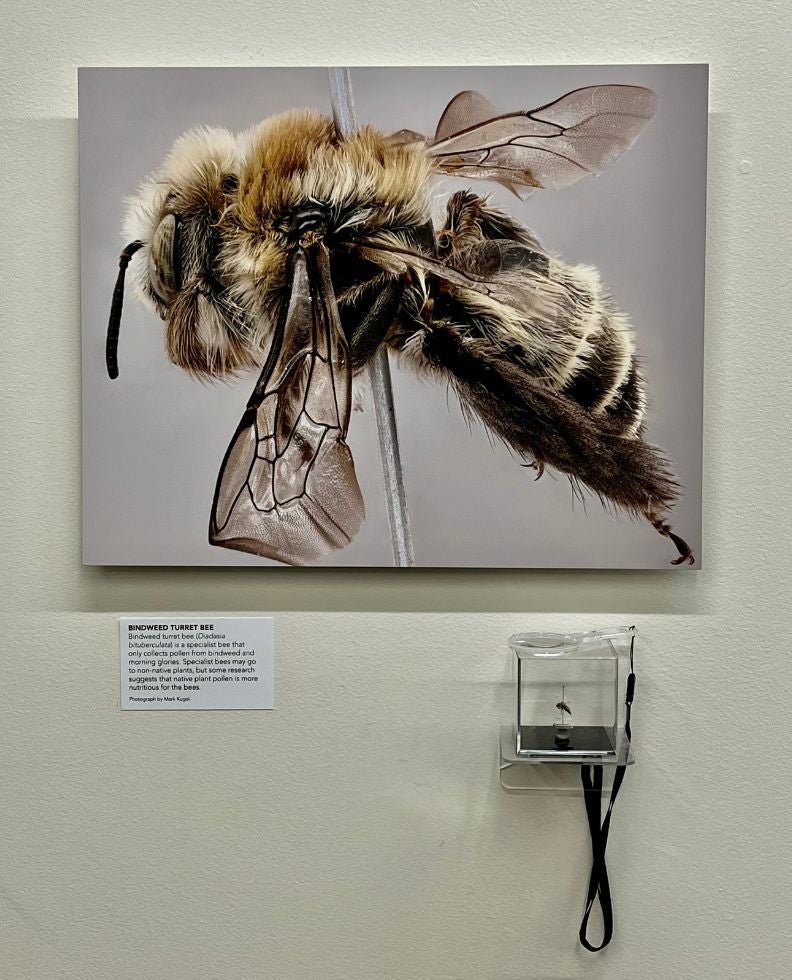
UC Santa Barbara’s size and productivity means a lot of fascinating pursuits happen behind the scenes. “There’s such great research going on; it’s just hard to spread that information to everyone,” Kelly said.
By showcasing the activities at UCSB, library exhibitions help promote collaboration across campus. For instance, Seltmann mentored three undergrad capstone projects using bee data in the Department of Statistics and Applied Probability. “This year, the students told me that one of the reasons they signed up to work with me was because they saw the exhibit,” she said.
Diversity and creativity
In addition to highlighting UCSB’s hidden research, the exhibit also showcases the campus’s unseen biological diversity. “We often think of biodiverse areas as someplace other than where we live,” Seltmann said. “But local biodiversity can be just as exciting as places far away from us.”
All but one of the bees in the exhibition live on campus, particularly areas like the North Campus Open Space or the UCSB Lagoon. The single outlier, the Channel Islands leafcutter bee, is a species of special concern. However, since it lives at the university’s Santa Cruz Island Reserve, you might say it’s still found at UCSB. Together, the 12 bees span the diversity of their clade. Some are social, others solitary. Some are large and fuzzy like little bears, while others glisten like microscopic gems. Some are specialists, others generalists, and one is a social parasite that steals pollen from other bees.
“I wanted a diverse array of bees,” Seltmann said. “I wanted pretty bees and ugly bees. Bees that we recognize as bees and bees that we don’t think of as bees at all.”
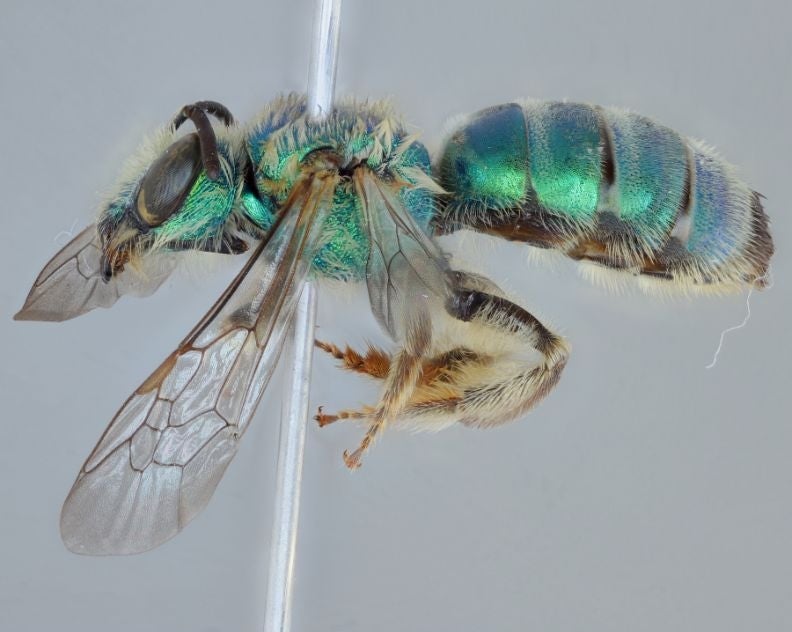
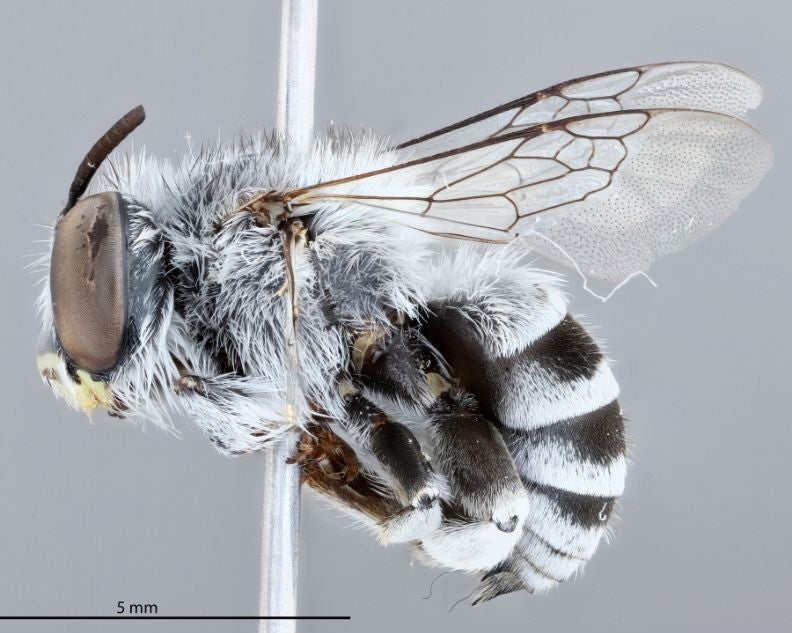

She hopes that people learn something just by viewing the exhibit because the artwork is placed in the context of research and learning. Indeed, the photos were intended as data for an academic study, not as art for an exhibit. But the genesis, according to Seltmann, is essentially the same.
“The act of research is also an act of creativity,” she said. That creativity can follow different paths: If these photos were in a journal, they’d be technical figures. On a library wall, they’re artwork. “It’s the same pictures, just packaged differently.”
